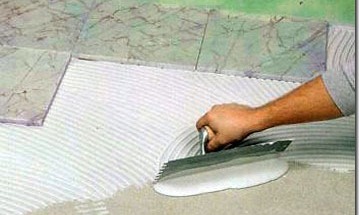Whichever first-class ceramic tile you find attractive, never forget that the quality and reliability of the finished product depends largely on the tile glue used. The correct choice of adhesive for ceramic tiles is based on the operational parameters of the room to be decorated, the facing surface and the type of coating. What is the peculiarity of glue compounds and how to choose the most suitable glue, let's try to understand the article.
Content
Correctly matched glue for floor tiles - guarantee of quality coating
The detachment of the tiling is not always due to the artist's unprofessionalism or shrinkage of the walls. The main reasons for the low-quality and short-lived result are poor preparation of the base floor or incorrect selection of the glue. These two points are considered paramount for a successful cladding. Often, the contractor when buying glue only considers the universal brands of compounds known and already proven by time, for example, mixtures of Ceresite, forgetting that the modern market of building materials can offer a much wider range of quality and at the same time inexpensive means, thus protecting you from unnecessary waste, and a new tile coating - from so unattractive and inconvenient in the work of "neighbor" - sand-cement mortar.
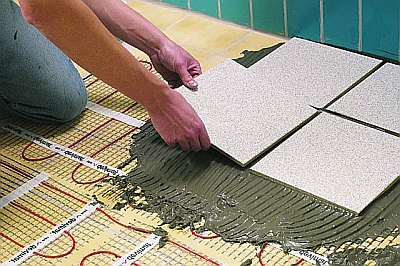
So, the constant expansion of the assortment of facing materials on the construction market leads to a rapid reaction of the leading factories - manufacturers of dry mixes for ceramics, tiles of gres and other facing coatings.
Under the tile adhesive is meant a multicomponent polymer-cement composition, which possesses increased elasticity, thermal stability, water and water resistance.

Types of tile adhesives
Depending on the technology of cladding and finishing materials, adhesive compositions can be classified into the following groups:
- cement;
- tiled epoxy;
- dispersive;
- polyurethane.
1. Cement adhesive for tiles, being the most popular and functional means, allows to make a huge assortment of interior finishing activities in residential premises. The low, acceptable cost of the glue, the rapid manufacture and ease of application in combination with cost-effective flow, determine the success of the adhesive.
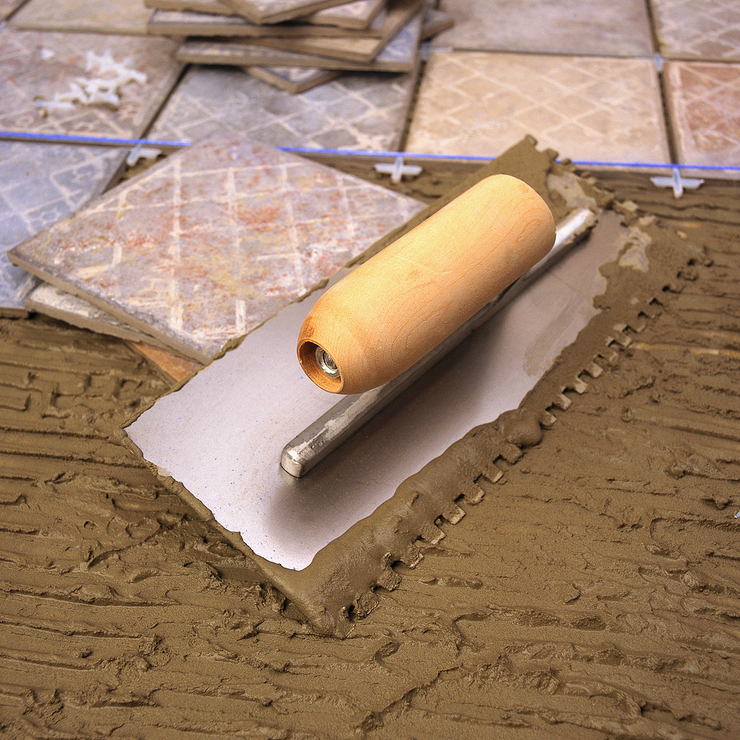
Its main components are fractionated sand, portland cement and modifying elements, taken in strict proportion. Cement glue is considered a highly effective composition when facing wall and floor surfaces in rooms.
2. Tile epoxy composition It is an adhesive solution of pasty type, which does not contain any solvents in its composition. Its distinctive feature is the possibility of application for the lining of ceilings in rooms of any purpose. Equally successfully copes with the functions of adhesive and leveling finishing material, it is used for reliable adhesion of ceramic, iron, steel, aluminum, concrete and wooden surfaces, for secure and imperceptible sealing of small holes and cracks in concrete, filling shallow seams.
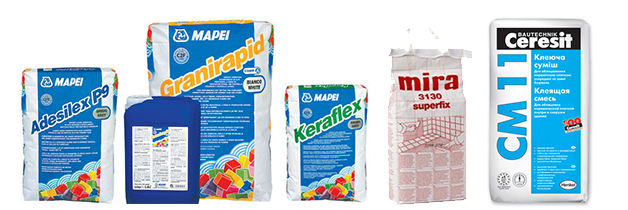
3. Adhesive dinvasiveexcludes content in its composition solvents and has a pasty consistency. Used for facing surfaces with massive and heavy tiles. Dispersion composition is effective at gluing tiles among themselves, ceramic tiles on sheets of particleboard and gypsum board, has excellent thermal insulation qualities.
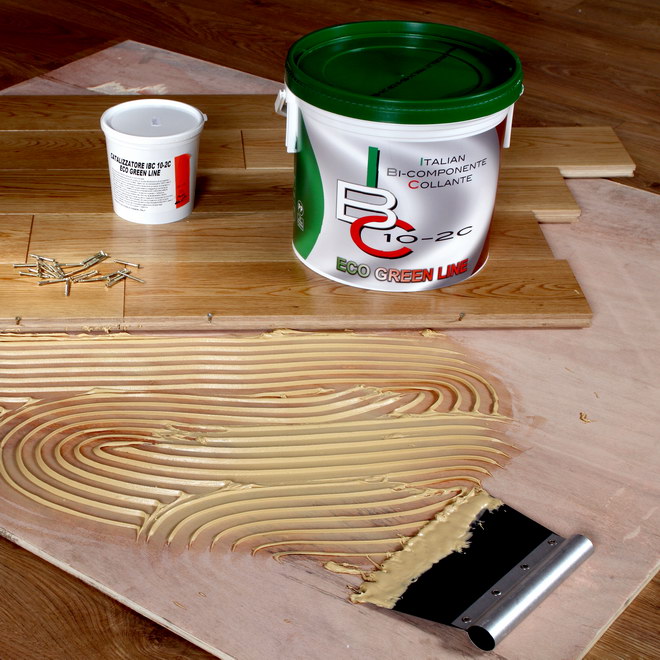
4. Adhesive tapepolyurethanerepresents one-component polyurethane solution with a high level of elasticity for effective insulation and bonding to the surface of all kinds of finishing materials, including ceramic tiles. Successfully used for facing deformable substrates.
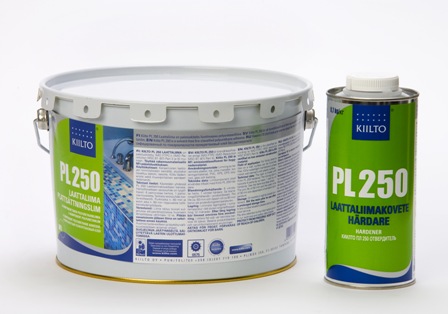
In order to fulfill the traditional complex of finishing activities, it is sufficient to use dry cement-sand tiles, which, in comparison with pastelike glue, have a number of undeniable advantages:
- a wide range of adhesive products of this type;
- a high level of reliability of adhesion of the tiled coating to the base;
- excellent mechanical properties;
- the possibility of performing external facing activities;
- affordable cost.
How to choose the best glue for laying tiles
To properly choose the best glue, you need to focus not only on the cost parameters, but also on the following points:
- Type of foundation, where the whole range of facing works will be carried out, and irregularities characteristic for it, for example, deviations in the vertical or horizontal, blistering. To make the surface of the thickness uniform, you will have to process different areas with different amounts of glue;
- Type of tile, which determines the level of its hygroscopicity. For example, in order to firmly lay ceramic granite with a low degree of hygroscopicity, it is better to abandon the use of a glue with a high water content, otherwise it will very difficult evaporation of liquid from the adhesive, which will lead to low reliability of bonding the lining material and the base. As the tilers say in such cases, the adhesive composition "sizzles" under the tile;
- Dimensions of tiles, determining the consumption of glue;
- Tile Facing Area. For the cladding of surfaces in the kitchen or in the room, the floor of which is equipped with electric heating systems, it is more appropriate to use glue which, under the influence of temperature fluctuations, gives the material a unique opportunity to contract or expand.
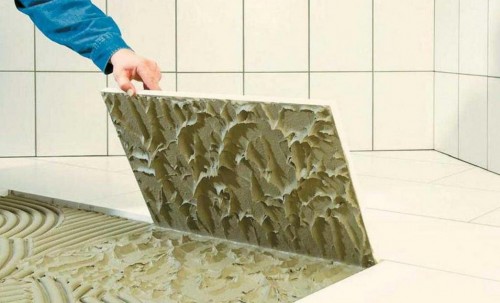
When choosing the right adhesive, you should pay attention to its quality characteristics:
1. Slip resistance. The composition, possessing thixotropic qualities, to some extent prevents the sliding of the laid coating. Most of the compositions do not allow the tile to slide more than 0.5 mm;
2. Open hours. The length of time during which the layer of applied adhesive keeps its qualities and does not freeze. The average interval of open time does not exceed usually 10-15 minutes;

3. Time to adjust the composition. This is the period during which you can correct the final location of the glued facing material before the glue hardens;
4. Time of adhesion of tiles and bases. It is not uncommon for cases where an early operation of the room in which the lining works are required is required, which means that the composition should be selected with special quick-setting parameters;
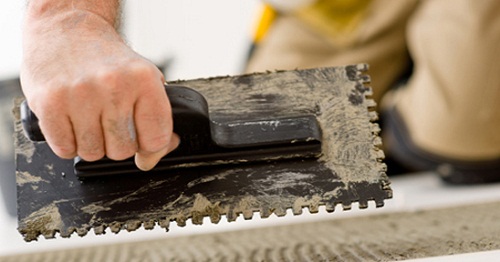
5. Consumption of tile adhesive. The indicator depends on the size of the tile, the condition of the base of the surface and even the width of the tooth grater. The average flow rate usually does not exceed 3-4 kg per 1 m².
The technology of preparing the adhesive and laying the floor covering on the adhesive can be learned from a video on youtube.


